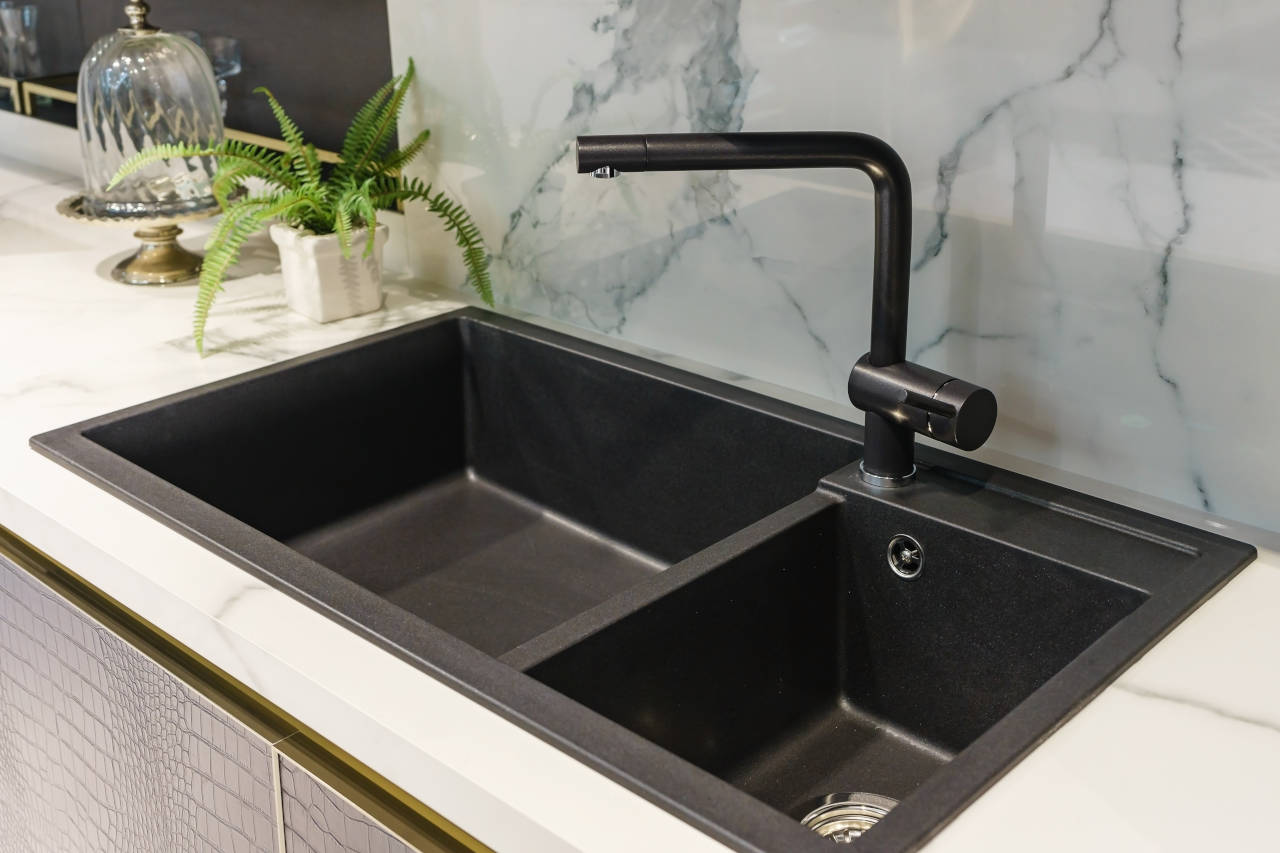Cost to Install a Sink – 2025 Price Guide
The cost to install a new sink will depend on the type of sink installed, the material, whether new plumbing is needed, what features you will add, whether it is a kitchen or bathroom sink, and what hardware it may need.
Continue reading to learn more about what factors impact the price the most and to get a better idea of what your new sink will cost.
Sink Installation Cost Calculator
Configure your project below to estimate the cost using 2025 price data. Continue reading below to learn more about what to expect for a sink installation project.
On this page:
How Much Does a New Sink Cost?
On average, people spend about $500 to install a new sink, not including the cost of the faucet. For a kitchen sink, the range is $400 to $1,400 installed, while the cost of a bathroom sink averages $300 to $1,200.

Sink Material Costs
The material selected will have a direct impact on the cost, with ceramic being the most economical choice and stone being the most expensive.
Porcelain
Porcelain is most commonly used for a bathroom sink due to its clean look and low cost. Porcelain sinks come in many shapes and sizes and can be drop-in, undermounted, or vessel. You can also find some fire-clay farmhouse porcelain sinks for the kitchen.
Keep in mind that these sinks cannot be used with garbage disposals. They cost between $90 and $500 each.
Glass
Depending on the state you live in, glass sinks will generally need to be installed above the countertop or in a bracket. Some states have no regulations around glass sinks, but many do and require the use of a grid drain as they do not have overflow valves installed.
They can be simple, clear glass or beautiful works of art made from several colors. Expect costs between $100 and $2,000.
Stainless Steel
Stainless steel is commonly used for kitchen sinks due to its low cost and durability. Steel sinks are commonly priced at $150 to $3,000.
Steel comes in a variety of thicknesses, or gauge, which impact the price. The thicker the steel, the more expensive it will be. Thicker material will be less prone to denting and is much quieter as dishes are added.
Cast Iron
Enameled cast iron sinks offer the beauty of ceramic with the durability of steel. They come in a variety of colors and are generally designed for farmhouse or drop-in style installation. Cast iron sinks often cost $350 to $1,850.
Stone and Solid Surface
Stone and solid surface sinks are often used to match the look of the countertop surface. These sinks are usually custom-made and come with a hefty price tag between $800 and $2000.
Solid surface sinks are integral with the countertop, while stone sinks may be farmhouse, undermount, vessel, or drop-in, depending on the style used.
Sink Installation Costs
Different types of sinks take more or less time to install than others, which will have an impact on the cost of installation.
Drop-in
Drop-in sinks are installed just as the name implies; they are dropped into an opening in the countertop. These are the easiest sinks to install, making them the least expensive option. They often cost just $150 to $200 for installation.
Vessel
Like a drop-in sink, a vessel sink is installed on top of an opening in the countertop and is also fairly straightforward to install. Installation costs about $150 to $200.
Undermount
Undermount sinks are installed by fastening clips to the underside of the countertop to support the sink. Epoxy is used with the clips to hold it in place, while a clamp through the drain keeps it in place until the epoxy cures.
They take slightly more time to install than a drop-in and cost about $250 to $300 to install.
Farmhouse
Farmhouse sinks are often installed in the kitchen and take a bit longer to install than a standard drop-in or undermount. Prepare to spend $300 to $500 on the installation.
Keep in mind that you will need a special sink cabinet to handle this style of sink. The cabinet is usually made to match the sink, so you will choose the sink first, then send its dimensions to both the countertop and cabinet makers for the best fit.
Pedestal
Pedestal sinks are most often used in the bathroom. They are technically wall-mounted, with the pedestal being used to hide the plumbing that would otherwise be exposed.
These cost roughly $250 to $300 for installation.
Faucets
On average, adding a faucet costs an additional $250, but the price varies based on the faucet selected. A designer kitchen faucet might cost up to $600, while a builder-grade bathroom faucet could be just $150.
Learn more about the cost to install a new faucet.
Adding a Garbage Disposal
Adding a garbage disposal where there wasn’t one before will require an electrician and a plumber. The average cost to install a garbage disposal is $400 to $500.
There are two kinds of garbage disposals: continuous feed and batch feed. A continuous feed disposal costs around $175 to $200 and a batch feed disposal is around $225 to $250. Although the continuous feed disposal is less expensive than the batch feed disposal, it is also more dangerous.
As long as the switch is turned on, it will keep grinding, and the water must keep running. That means anything that goes down the drain mistakenly will be ground up, including silverware and fingers. However, you can add a baffle to keep items from falling into the disposal for about $15 to $25.
A batch feed disposal can only handle small amounts of waste and is perfect for those who compost. The machine only grinds when the cover is on. Therefore, it is less likely things will get dropped in by accident.
For a new install, you should consider adding a septic tank treatment dispenser and a scent release mechanism. The treatment dispenser adds a solution to the ground-up garbage before it goes into your septic system and prolongs its life. Either of these items will add $50 to $100 to the installation price.
Installation costs about $200 for the plumbing side. It will take about three hours and cost $40 to $50 per hour. Plus, you will spend around $150 to $200 to install a receptacle and switch. Consult our electrical receptacle cost guide for more details.
Adding a Spray Hose
A new kitchen sink spray hose and nozzle costs between $15 and $50. Installed as a separate item, it will take about an hour and cost less than the typical service charge, even when there is no pipe coming in for it.
The plumber can add a “T” to the cold-water feed with a shutoff valve. Expect to pay around $100 to $150 for everything.
Cost to Add New Plumbing
Adding the pipes and drainage for a new sink where there was none previously usually costs between $350 to $1,500, depending on the type of sink you choose and what preparations need to be done to the surrounding area.
Often, the plumber will have to remove drywall or tile to get the access required to add new piping, which could increase the cost of the project.
DIY Versus Professional Plumbing Installs
Unless you have experience with plumbing, you will want to hire a professional. If you have the tools, time, and talent, you might be able to do the work yourself, though in some localities, you might be required to hire a licensed plumber to do the work, especially to add new supply lines and drain pipes.
A permit, if necessary, generally costs $20 to $200, and an inspection fee might be added.
Before hiring a plumber, be sure to get three or more estimates and compare their statement of work. Going with the cheapest contractor is not always the wisest choice. You might find out there are significant differences in what you will receive for your money. Make sure they are licensed/certified, insured, or bonded, and provide a written warranty.
Learn more about the cost of hiring a plumber.
All pricing information on this page is based on average industry costs, and is subject to variance for project-specific materials, labor rates, and requirements.


